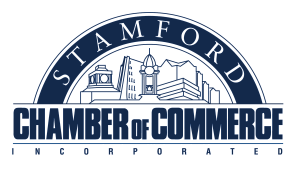Modifying a Protective Order in Stamford
If you are concerned about modifying a protective order in Stamford, a top protective order lawyer could help. A seasoned attorney knows what it takes to get a protective order modified, and they could present your case in a way the judge will like. Let a dedicated CT attorney work towards an optimum outcome on your behalf.
When can a Protective Order be Modified?
A protective order could be modified as soon as it is issued. Typically, if a protective order is issued on an arraignment date, an attorney can make an argument to reduce the protective order if necessary. An attorney could also file a motion to modify a protective order and have that motion heard on any date. Typically, an attorney would have the protective order remain in place for about a month before their motion to modify it, because it gives more standing in front of the judge about why it should be modified. If it is a protective order that should not be in place, it could be challenged right away.
Modifications Must Happen in Court
Modifying a protective order in Stanford must be done in court in front of a judge. A judge has to grant the modification because a new protective order is written out and issued on the record in court, and a copy of that has to be given to the defendant. The judge must determine that the defendant understands the protective order.
Nullifying a Protective Order in Connecticut
If a protective order is put into place and the petitioner decides that they no longer want it, they cannot nullify or withdraw the protective order. If a person files for a restraining order and then wants to withdraw their application, they are able to do so. In criminal court, if a restraining order has already been put into place by a judge, that person could go to court and advocate to have the protective order lessened, but it cannot be completely removed until the criminal case is disposed of.
Types of Protective Order Modifications
Modifications could be made to an existing protective order in a few different ways, depending on what level of a protective order has been put into place. If a residential stay-away order is put into place, it could be modified to allow a person to return into the home. A lot of the times, the goal in these cases is to modify the protective order to a partial protective order so that there is less of a chance that a violation can occur.
How a Protective Order Impacts Rights
Typically, a protective order can encompass any order put into place by a family court. Contact or custodial rights could be modified to allow parties to have less contact with their children, or to remove a party from the home they share with their children.
Anytime a protective order is in place, the party with the protective order against them must relinquish their firearms. As long as there is a protective order in place, that party may not have a firearm. Firearm rights may not be restored or modified.
Modifying a Protective Order Without the Consent of the Petitioner
Modifying a protective order in Stamford could happen without the consent of the petitioner. This can occur if an attorney files a motion to modify the protective order to allow the protected party to return to their home or to allow contact between the two parties.
If a petitioner or a protected party does not want the protective order to be modified, they would give their input to the victim advocate who works in the court. When the motion to modify the protective order is heard before the judge, the victim advocate would be able to give insight about whether or not the petitioner in the case wants the protective order to be modified. Typically, if the petitioner is not on board, the judge would deny the request to modify the protective order.
Rehabilitative Options in Stamford
There are rehabilitative options and therapy in Stamford, especially in relation to criminal cases. Depending on what the allegations are, counseling or some other rehabilitation could make modifying a protective order in Stamford more likely. Most of the time, a protective order is put into place when a couple has a bad argument or gets into a physical altercation. In such a case, a defendant could benefit from counseling or a diversionary program through the court that would educate them on domestic violence, the chances of recidivism, and anger management. Typically, a protective order would not be modified unless the defendant undergoes some treatment or counseling.
Contact a CT Domestic Violence Attorney for Help
If you need assistance modifying a protective order in Stamford, reach out to a top domestic violence lawyer as soon as possible. The best attorneys understand the emotional and legal challenges that accompany protective orders, and they could fight for a favorable outcome in your case. Call today to discuss your options.












